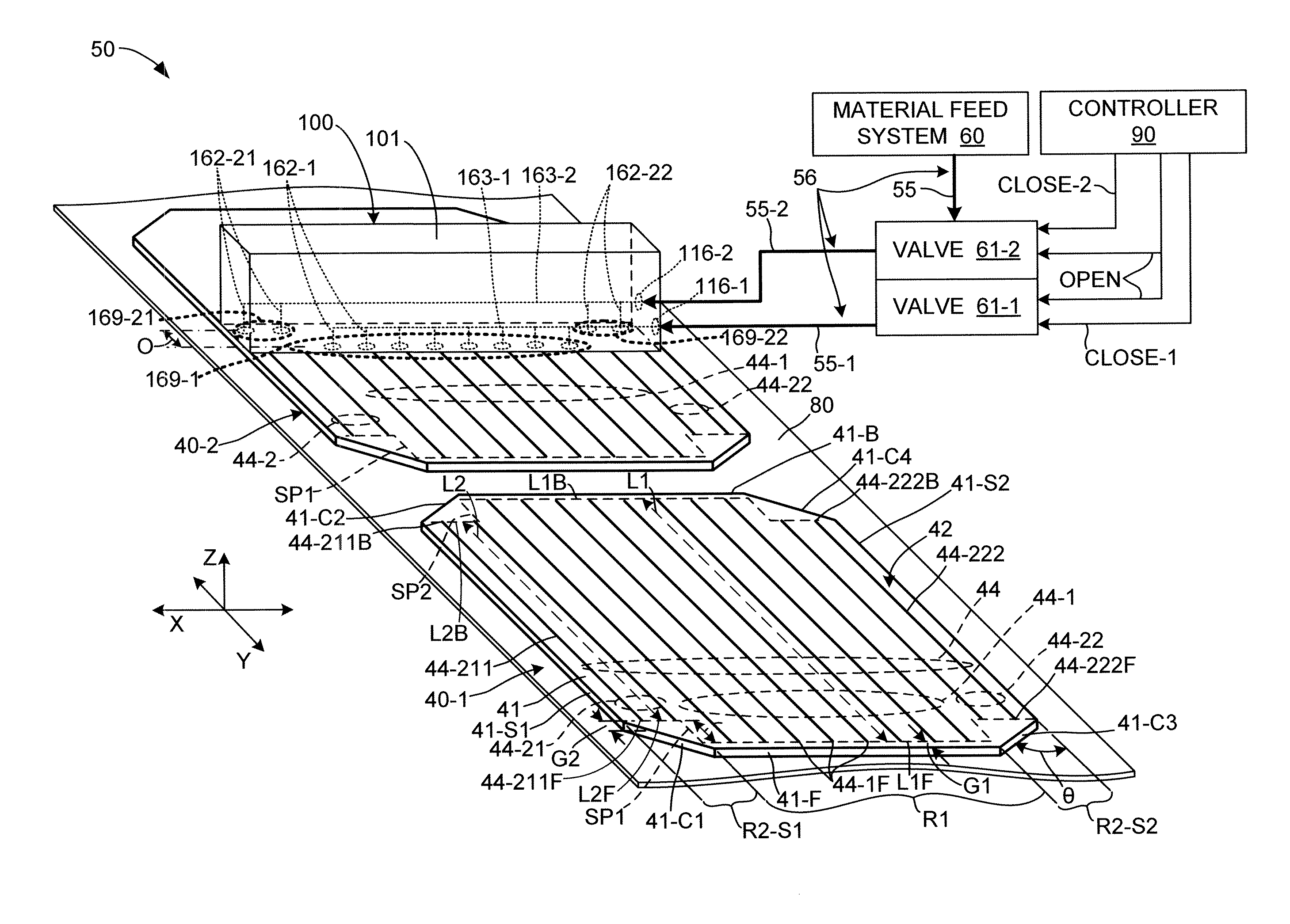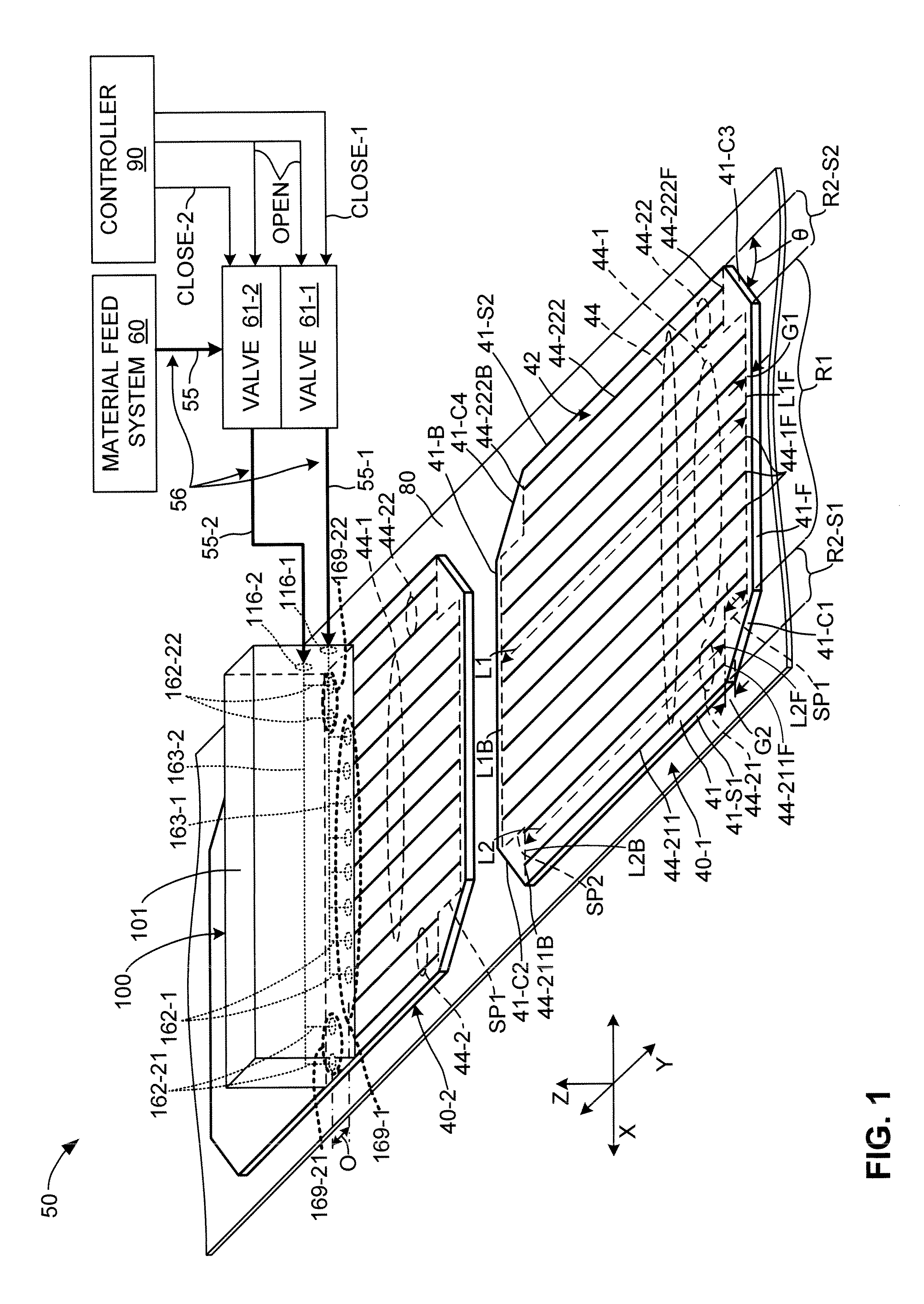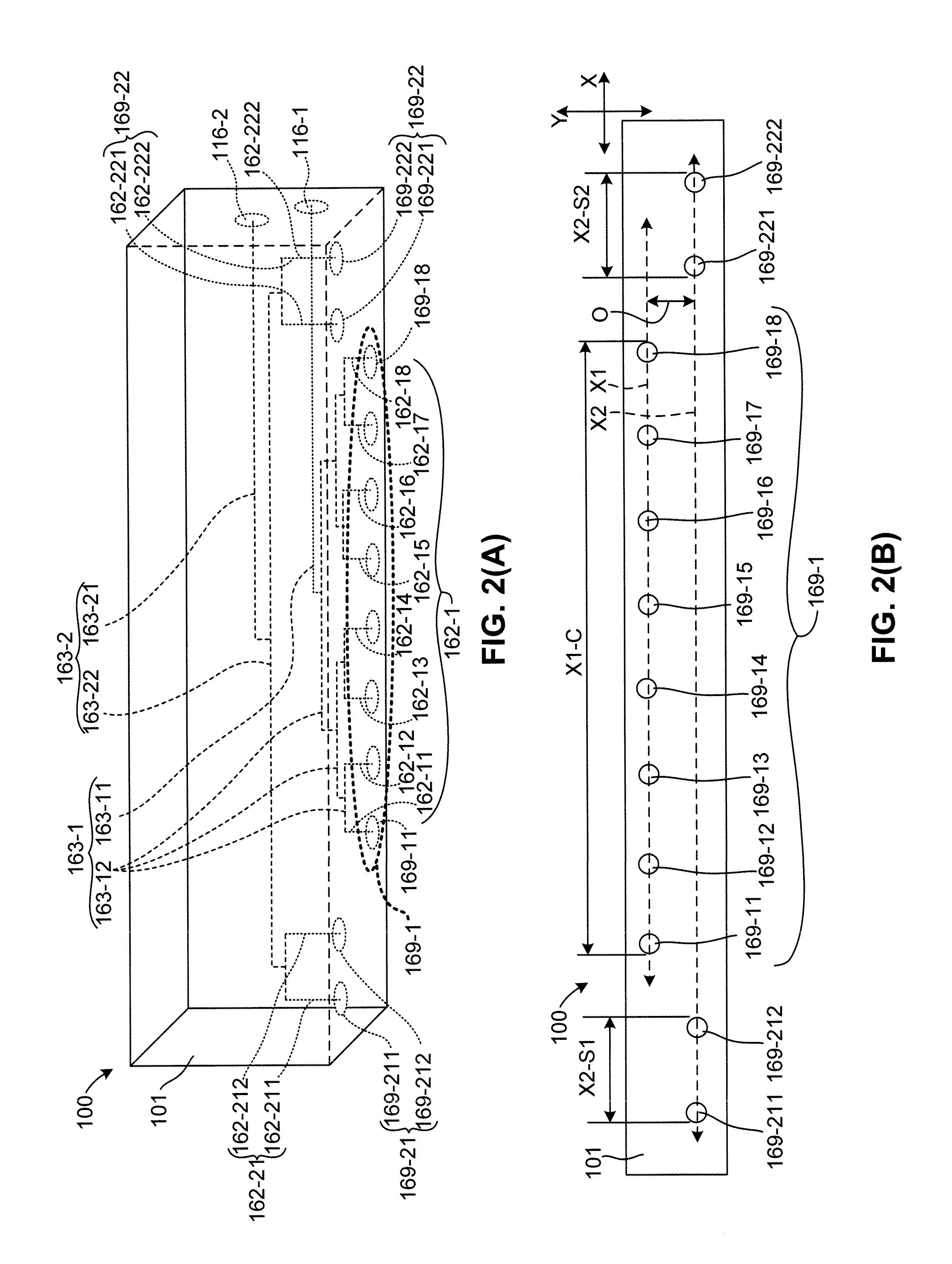Micro-Extrusion Printhead With Offset Orifices For Generating Gridlines On Non-Square Substrates
- Summary
- Abstract
- Description
- Claims
- Application Information
AI Technical Summary
Benefits of technology
Problems solved by technology
Method used
Image
Examples
case 62c
[0080]Outer case 62C is a pressure container defining an inlet port 62C-IN through which gridline material is received at pressure P0 from gridline material source 60C-1 (as shown in FIG. 10) into a first inner chamber portion 63C-1, and an outlet port 62C-OUT that passes gridline material from a second inner chamber portion 63C-2 at one of desired inlet pressures P11, P21 or P31 to printhead 100C (no shown). Fixed seal structure 64C is fixedly disposed inside outer case 62C between first inner chamber portion 63C-1 and second inner chamber portion 63C-2, and includes a seal 64C-1 (e.g., an o-ring, gasket or cup-seal) that defines a central opening 64C-2.
[0081]Movable piston 65C includes a relatively small diameter shaft 66C, a relatively large diameter stopper 67C, and a conic surface 68C that tapers from the relatively large diameter of stopper 67C to the relatively small diameter of shaft 66C. A first portion of shaft 66C disposed outside outer case 62C is operably connected to a...
PUM
| Property | Measurement | Unit |
|---|---|---|
| Time | aaaaa | aaaaa |
| Pressure | aaaaa | aaaaa |
| Flow rate | aaaaa | aaaaa |
Abstract
Description
Claims
Application Information
 Login to View More
Login to View More - R&D
- Intellectual Property
- Life Sciences
- Materials
- Tech Scout
- Unparalleled Data Quality
- Higher Quality Content
- 60% Fewer Hallucinations
Browse by: Latest US Patents, China's latest patents, Technical Efficacy Thesaurus, Application Domain, Technology Topic, Popular Technical Reports.
© 2025 PatSnap. All rights reserved.Legal|Privacy policy|Modern Slavery Act Transparency Statement|Sitemap|About US| Contact US: help@patsnap.com



